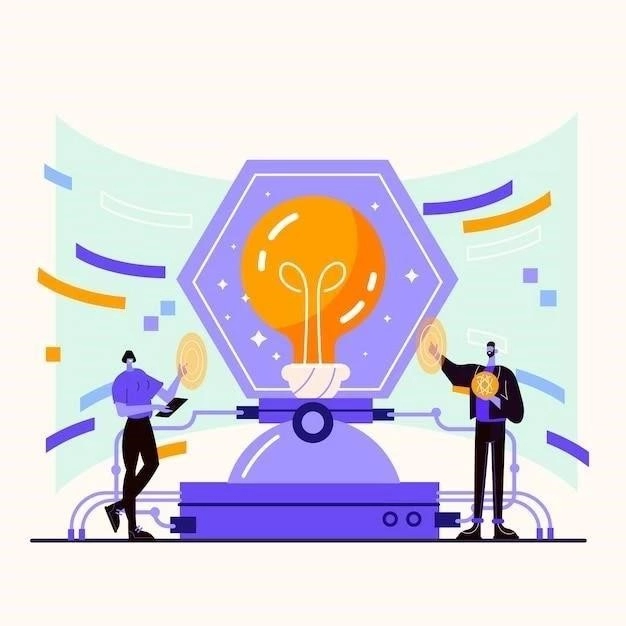Decision-making, a fundamental aspect of human cognition, shapes our actions, experiences, and ultimately, our lives. From seemingly trivial choices, such as what to have for breakfast, to life-altering decisions, like accepting a job offer, we are constantly navigating a complex web of options and consequences. But what drives our choices? How do our brains evaluate the potential outcomes and settle on a course of action? This exploration delves into the fascinating science of decision-making, unraveling the intricate interplay of psychological, neurological, and environmental factors that influence our judgments.
The Role of Cognitive Psychology
Cognitive psychology, the study of mental processes, provides crucial insights into decision-making. Key concepts include:
1. Dual-Process Theory
This theory posits that our brains utilize two distinct systems for processing information and making decisions:
- System 1 (Intuitive): This system operates automatically, quickly, and effortlessly, relying on heuristics, emotions, and past experiences to guide decisions. It is efficient but prone to biases and errors.
- System 2 (Deliberative): This system is slower, more analytical, and requires conscious effort. It involves logical reasoning, weighing evidence, and considering multiple perspectives. While more accurate, it can be resource-intensive and time-consuming.
The type of decision-making system we employ depends on factors like the complexity of the situation, available time, and our emotional state.
2. Heuristics and Biases
Heuristics are mental shortcuts our brains use to simplify decision-making. While efficient, they can lead to systematic errors in judgment, known as cognitive biases. Some common heuristics and biases include:
- Availability Heuristic: We tend to overestimate the likelihood of events that are easily recalled or vivid in our memories.
- Confirmation Bias: We seek out information that confirms our existing beliefs and discount evidence that contradicts them.
- Framing Effect: The way information is presented or framed can significantly influence our choices, even if the underlying options are identical.
3. Risk and Uncertainty
Decision-making often involves assessing and managing risk, the probability of potential losses or gains. Our brains are wired to be more sensitive to potential losses (loss aversion), leading us to make risk-averse choices, even when the potential rewards are greater.
The Neuroscience of Decision-Making
Advancements in neuroscience have provided a deeper understanding of the neural mechanisms underlying decision-making. Key brain regions involved include:
1. Prefrontal Cortex (PFC):
The PFC, located at the front of the brain, plays a crucial role in executive functions, including planning, working memory, and decision-making. It integrates information from other brain areas, weighs potential outcomes, and exerts control over impulsive behaviors.
2. Amygdala:
The amygdala, part of the limbic system, processes emotions, particularly fear and anxiety. It plays a critical role in assessing threats and rewards, influencing our decisions in emotionally charged situations.
3. Ventral Tegmental Area (VTA) and Nucleus Accumbens:
These regions are part of the brains reward pathway, releasing dopamine, a neurotransmitter associated with pleasure and motivation. They play a key role in evaluating the potential rewards of different choices.
Studies using brain imaging techniques, such as fMRI, have revealed intricate neural networks that activate during decision-making, highlighting the complex interplay between cognition, emotion, and reward processing.

Factors Influencing Decision-Making
Decision-making is not solely an individual cognitive process. It is influenced by a myriad of external factors, including:
1. Social Influences:
We are social creatures, and our decisions are often swayed by the opinions, beliefs, and actions of others. Conformity, social norms, and groupthink can significantly impact our choices.
2. Cultural Factors:
Culture shapes our values, beliefs, and preferences, influencing our decision-making styles. For example, individualistic cultures emphasize personal autonomy, while collectivistic cultures prioritize group harmony.
3. Environmental Cues:
Subtle cues in our environment can unconsciously influence our choices. For example, studies have shown that exposure to certain colors or scents can affect consumer behavior.
Improving Decision-Making
While we may not always be aware of the complex processes shaping our choices, we can take steps to improve our decision-making abilities:
1. Be Aware of Biases:
Understanding common cognitive biases can help us identify and mitigate their influence on our judgments.
2. Seek Diverse Perspectives:
Considering different viewpoints and challenging our own assumptions can broaden our understanding and lead to more informed decisions.
3. Take Your Time:
Avoid rushing into decisions, especially when faced with complex or high-stakes choices. Allow time for reflection and deliberation.
4. Consider Long-Term Consequences:
While its tempting to focus on immediate gratification, consider the potential long-term impact of your choices.
5. Practice Mindfulness:
Being present and aware of our thoughts, feelings, and surroundings can help us make more intentional and aligned choices.
Conclusion
Decision-making is a multifaceted process, influenced by a complex interplay of cognitive, neurological, and environmental factors. By understanding the science behind our choices, we can gain valuable insights into how we make judgments, recognize our own biases, and develop strategies to improve our decision-making skills. As we navigate the myriad choices life throws our way, cultivating self-awareness, critical thinking, and a willingness to learn from our experiences can empower us to make more informed and fulfilling decisions.
The Interplay of Emotion and Reason
While traditional economic models often portray humans as purely rational decision-makers, contemporary research emphasizes the significant role of emotions. Neuroscientific studies demonstrate that emotions are not simply subjective experiences but rather physiological and neurological processes that profoundly influence our choices. The amygdala, in particular, acts as a rapid threat-detection system, triggering emotional responses before conscious awareness. These emotional appraisals can bias our perception of risks and rewards, leading to decisions that prioritize immediate emotional comfort over long-term rationality.

The Predictive Power of the Unconscious
Emerging research highlights the surprising accuracy of unconscious processing in decision-making. Our brains continuously absorb and process vast amounts of information below the threshold of conscious awareness; Studies using implicit association tests and other measures of unconscious bias reveal that our implicit attitudes, beliefs, and preferences can significantly predict our choices, even when these contradict our conscious beliefs. This suggests that intuition, often dismissed as unreliable, can actually reflect a form of sophisticated pattern recognition honed through experience.
Decision Fatigue: The Depletion of Cognitive Resources
The human capacity for making sound decisions is a finite resource. As we navigate a multitude of choices throughout the day, our cognitive resources become depleted, a phenomenon known as decision fatigue. This depletion impairs our ability to regulate impulses, weigh potential outcomes, and make optimal choices. Research suggests that factors such as stress, sleep deprivation, and information overload can exacerbate decision fatigue. Recognizing the signs of this depletion and implementing strategies for cognitive replenishment, such as taking breaks, prioritizing tasks, and minimizing distractions, can enhance decision-making effectiveness.
The Evolving Landscape of Decision Science
The field of decision science continues to evolve rapidly, integrating insights from psychology, neuroscience, behavioral economics, and computer science. Researchers are exploring the use of artificial intelligence and machine learning to model human decision-making processes, identify individual decision-making styles, and develop personalized interventions to improve decision quality. Additionally, there is growing interest in understanding the ethical implications of algorithms and automated decision-making systems, particularly in high-stakes domains such as healthcare, finance, and criminal justice. As our understanding of the complexities of human choice expands, so too will our capacity to make more informed, effective, and ethically sound decisions.
The Neuroscience of Choice Architecture: Influencing Decisions for Good
While respecting individual autonomy remains paramount, understanding the subconscious influences on decision-making opens up ethical avenues for whats termed “choice architecture.” This field explores how the presentation of options, rather than their inherent content, can nudge individuals towards beneficial choices without restricting their freedom to choose otherwise.
For instance, setting healthier food options at eye level in a cafeteria, or pre-selecting organ donation opt-in on drivers license forms, leverages our tendency towards the path of least resistance. This subtle framing can lead to significant improvements in public health and social outcomes, without removing individual agency.
Beyond the Individual: Collective Decision-Making and Its Challenges
Decision science extends beyond the individual to encompass how groups, organizations, and even societies make choices. Collective decision-making introduces its own complexities, such as groupthink (where conformity overrides critical evaluation), diffusion of responsibility, and the potential for polarization.
Research into effective group decision-making highlights the importance of diverse perspectives, structured deliberation processes, and mechanisms for dissent and accountability. Understanding these dynamics is crucial in fields ranging from business leadership and political science to international relations and conflict resolution.
The Future of Decision-Making: Embracing Complexity and Embracing Uncertainty
As our world becomes increasingly complex and interconnected, the challenges we face demand ever more nuanced and sophisticated approaches to decision-making. Traditional models that rely solely on rational analysis or historical data struggle to keep pace with rapid technological advancements, globalized markets, and unpredictable events;
This necessitates a shift towards decision-making frameworks that embrace complexity, acknowledge uncertainty, and prioritize adaptability. This includes developing tools for scenario planning, incorporating diverse perspectives, and fostering a culture of continuous learning and adaptation. By embracing uncertainty not as an obstacle, but as an inherent aspect of decision-making, we can navigate the complexities of the 21st century with greater resilience and foresight.

Bridging the Gap Between Theory and Practice: Decision Support Systems
The burgeoning field of decision science is not confined to theoretical models and laboratory experiments. Increasingly, researchers and practitioners are collaborating to translate these insights into practical tools that can aid individuals and organizations in making more informed and effective decisions. Decision support systems (DSS) represent a prime example of this translational endeavor.
DSS leverage data analytics, machine learning, and visualization techniques to provide users with structured information, model potential outcomes, and highlight trade-offs associated with different courses of action. These systems can range from simple spreadsheets that facilitate cost-benefit analysis to sophisticated software platforms that integrate data from multiple sources and utilize predictive algorithms to forecast future scenarios.
The Human-Technology Partnership in Decision-Making
Its crucial to recognize that DSS are not intended to replace human judgment but rather to augment and enhance it. These systems excel at processing vast quantities of data, identifying patterns, and generating probabilistic forecasts, tasks that often overwhelm human cognitive capacities. However, human expertise remains essential in defining the problem, setting objectives, interpreting results within a broader context, and ultimately making the final decision.
The most effective DSS are those designed with a deep understanding of human cognitive strengths and limitations, providing information in a clear, concise, and actionable manner. Furthermore, these systems should incorporate mechanisms for user feedback and continuous learning, allowing them to adapt to changing circumstances and refine their recommendations over time.
Ethical Considerations in the Age of Data-Driven Decisions
As we increasingly rely on data-driven decision-making, its imperative to address the ethical considerations inherent in this paradigm shift. Algorithms are not neutral; they inherit the biases present in the data on which they are trained. This can perpetuate existing societal inequalities if not explicitly addressed. For instance, algorithms used in hiring, lending, or criminal justice risk amplifying historical patterns of discrimination if not carefully audited and calibrated for fairness.
Moreover, the increasing pervasiveness of data collection and analysis raises concerns about privacy, transparency, and accountability. Its essential to establish clear guidelines and regulatory frameworks that govern the use of personal data in decision-making, ensuring that individuals are informed about how their information is being used and have mechanisms for recourse in cases of unfair or harmful outcomes.
Cultivating Decision Literacy for the 21st Century
The rapid pace of technological advancement and the increasing complexity of the world necessitate a renewed emphasis on cultivating decision literacy across all segments of society. This entails equipping individuals with the knowledge, skills, and critical thinking abilities to navigate a world awash in information, evaluate evidence, assess risks, and make sound judgments in the face of uncertainty.
Educational initiatives should incorporate decision science principles into curricula across disciplines, from STEM fields to the humanities and social sciences. By fostering a generation equipped to understand the cognitive processes, biases, and environmental influences that shape their choices, we can empower individuals to become more discerning consumers of information, more effective decision-makers, and ultimately, more active and engaged citizens.










